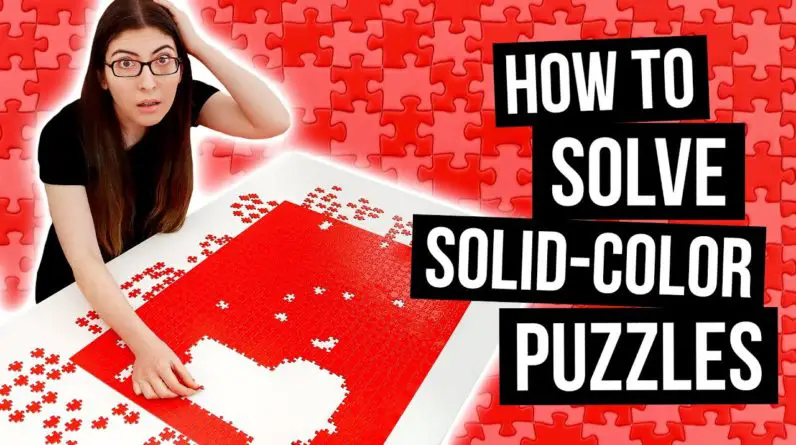
How to Solve a Solid Color Puzzle
All that i know is red puzzle pieces. I’Ve been working on this puzzle for 84 years, hi everyone welcome back to karen puzzles. Today we are going back to jigsaw, puzzle basics. The question i probably get asked the most often is somebody who’s having trouble with a jigsaw puzzle, and they don’t know how to move forward or how to finish it and like 99 of the time. The part that they’re having trouble with is either solid, colored or like a very similar texture.
So today, i’m gon na share tons of jigsaw, puzzle tips and hacks with you, but before i get into it, this video is sponsored by blue kazoo. I needed some puzzles to use as examples, and so when they reached out to me, i thought that their puzzles would be perfect for this video. My personal favorites of all of their puzzles are their color series. This is the triangles puzzle and you know how much i love a good gradient puzzle. They also have this round moon puzzle, which i’ll be using as an example today, and they also have this limited edition solid colored puzzle series, so i’m also going to be taking on the solid colored red puzzle.
So when you’re working on a difficult puzzle – or i mean really any puzzle, there are three things that you definitely need space light and a good background number one have enough space to lay out all of the pieces and i’m going to be showing you later on. In the video, exactly how i do that number two have good light, because if you can’t even see the pieces, nothing else that i tell you is going to help and number three have a clean background. That has a lot of contrast against the color of the puzzle pieces so that you can really see the piece of shapes and it doesn’t all just blend together. Okay, so when you’re doing a jigsaw puzzle, there are really only two things that you’re looking at the whole time. There’S the image that’s on the pieces and then there is the piece shape, so jigsaw puzzles will typically use either a ribbon cut or a random cut.
Ribbon cut is what you think of when you think of a jigsaw puzzle. You know the pieces are basically in a grid and then random cut is exactly what it sounds like the pieces are random and they’re, not in a grid. Ribbon cut is a lot more common and it’s what the blue kazoo puzzles use. So that’s what i’m going to be talking about for the most part in this video but i’ll touch on random cut at the end of the video. So in a ribbon cut puzzle, there are six basic puzzle: piece shapes these, don’t have official names, so i decided to just give them my own names so that we can refer to them throughout this video and you’ll know what i’m talking about all right.
So i figured the best way to do this. Video was to just go to the extreme and do a fully solid colored puzzle where there’s no image at all. Yes, i’m taking on the thousand piece solid, colored red puzzle, let’s get into that [ Music ]! All right so for this first example, i’m going to be using this solid red puzzle from blue kazoo, interesting that they didn’t make a blue one considering their name, but anyway, let’s open it up. Oh man, oh wow.
What have i gotten myself into? Oh, my gosh: this is the funniest thing i’ve ever seen, so all of the blue kazoo puzzles come with a poster of the image, and this one is literally just a solid red poster. Oh, my god, that’s hilarious, just in case you needed a reminder of like what you signed up for so when you’re doing a solid colored puzzle or also a solid colored section of a puzzle. Literally, the only thing you have to go on is the piece shape. Obviously, there’s no design on the pieces to provide extra clues, so you have to approach it very methodically.
You know. If we just look at the pieces, all in one big pile, it is impossible to see what we’re working with you would just kind of be like randomly grabbing pieces and like hoping that maybe you spotted one that was fairly distinct. But you just can’t work with with puzzle pieces like this, so what we’re going to do is we’re going to separate all of the puzzle pieces by shape also we’re going to count all of the edge pieces as their own shape. This is definitely the type of puzzle where you have to put the time into the sorting before you can actually start working on the puzzle. It’S the only way to approach it.
So, let’s start the sorting, [ Music ], so i’m going to move all of the inside pieces off to the side because we’re not dealing with them quite yet we’re going to start with the edge pieces just like any other puzzle. So again, we’re going to do a little bit of sorting we’re going to divide the edge pieces up. So we have two outs and then we have two ins and then we have one out and one in and one out and one in but on opposite sides and then of course the corners get their own separate category. So we’re not worrying about what’s happening on the top of the piece. Don’T worry about that at all, yet we’re only looking at what’s happening on the sides of the piece, so i’m gon na go ahead and sort those out [, Music, ], all right so now.
Finally, after all of that, sorting we’re finally going to start putting the puzzle together, so you can either work off of one of the corners or you can just find a distinctive shape within the pieces. I really like this corner, because you can see that this knob is pretty distinctive. It’S like big and a little bit flat, so i think i’ll be able to spot the in that matches up with that, and the beauty of doing all of this sorting is that, when i’m looking for the piece that this fits into, i don’t even have to Look at half of the pieces because obviously two outs are not going to go together. So literally, all i have to look at is this half of the pieces? Oh oh, my gosh.
I just found it there. It is they fit together beautifully. So one down all of the rest of them to go and at the beginning, if you’re trying a bunch of pieces that don’t fit where you’re trying them like it’s fine, you don’t lose anything by trying pieces where they don’t go. So i’m just gon na go ahead and put together the edge [ Music, ], [, Music ] all right. So at this point we have the edge finished and we have all of the inside pieces separated by shape.
I’D recommend uh taking a little break, having a snack having a bit of a stretch, because the next thing we’re going to do is to lay out all of the pieces into nice. Neat grids i mean. Basically, if we look at all of the pieces, just kind of in a pile like this or even laid out flat, but still just like scattered around, you know it’s hard to see what you’re working with it’s hard to see. All of the details of the different individual pieces. So since i don’t have space on this table to lay out all of the pieces flat all at once, i’m going to grab a piece of foam board and using that we can, you know, lay out the pieces and then kind of move them on and off.
The table as we need to see them all right so now that they’re all on the board, i’m just going to lay them out into a grid in nice, neat rows and that way um. You know we can see everything that we’re working with so most puzzle pieces aren’t perfectly square. Most ribbon cut puzzles are kind of rectangular, so, within the same shape of piece, you can actually separate the pieces even further, based on whether it’s going to go horizontally or vertically. You can see that here with these two kind of standard shapes this one is going to go vertically. You can see it’s taller than it is wide and this one is going to go horizontally because it’s wider than it is tall.
So as you’re laying them out, you can, you know separate them out that way and then, when it comes to actually put them into the puzzle, you just keep on narrowing down the possibilities of how many pieces there are that could go into each spot and so Up here where i was starting to lay out the castle pieces, i’m actually going to move all of the wide ones. We just keep keep doing as much of the work as we can beforehand and that’ll make actually putting the puzzle together, go much faster and be much less [, Music, ], frustrating [, Music ] all right so now that we have all of the pieces laid out. Uh this is another great time to take a break stretch out, have a snack, but let me show you what we have so over here on this side of the puzzle. We have these wide shapes and then we have the tall ones. Then we’ve got all of the four outs and all of the four ins.
Then we have the standard piece shape the tall ones and the wide ones, and then we have the one box pieces and they’re separated based on which direction the box is facing, and i realized that since i’m going to be starting from this corner, i actually had A lot of space inside the border that i could use so as i put in pieces – and i you know, takes pieces away from over here – these will move over and then i have my little overflow. I have all the castle pieces down here on foam board, which is on the bench next to me. So, okay, we might look at this and get a little overwhelmed. I’M definitely feeling a little overwhelmed, but here is how you get started. I’D recommend just starting from a corner because you have two sides to work off of so that’s a lot more information than just you know, a single knob.
So, let’s start here, you know we have these two ins, which means that it’s going to be a box sort of like this, so it could be any of these piece shapes. You know it could be four ins, because that could fit in either direction here and because these pieces are rectangular, we know it’s not going to fit the tall way. It has to fit one of the long ways. It could be one of these wide two box pieces. I mean, obviously not that one.
It could be one of the tall ones facing in this direction, or it could be one of these one box pieces again facing in that direction, and then these are the shapes that it’s definitely not. So it’s not these because they don’t have that box from having the two ends, and this one is um actually that one’s a little bit of a square. So not a great example. So if we take a piece like this, you can see the rectangle has to face this way. If we try putting it in in this direction, it is way too tall on that side and way too short on this side.
So now we want to look at this and if you’re new here, you know, really try to put into words exactly what you’re looking for. So when you look at this, we’re going to need one hole that is much bigger than the other one, and you can see that these kind of come in pretty sharply at the base of this knob. And then we can see that this knob is like sort of square shaped um. These don’t come in quite as far so keeping in mind which potential shapes we’re looking at you just start scanning over all of them and trying to find something that matches what you’re. Looking for like maybe this one you can see it has the small knob here, the bigger one there, let’s try it.
No okay, i mean that would have been amazing if it fit the very first one that i tried. But you know it was close. So we’re going to be looking for something similar to that. So, just like anything else in life, it just takes practice. You know the more puzzles you do, the better you’ll get at looking at a shape and then being able to spot that shape out on the board like in a single puzzle, piece, it becomes more intuitive which shapes could potentially fit and which ones definitely won’t and You’Ll get better at sort of rotating puzzle pieces in your head so that you can judge you know whether it’s gon na fit um before you actually pick it up and put it into place, even if it is upside down out on the board.
One thing i do think a lot about is: aren’t there people out there who can’t picture shapes in their mind like do they do jigsaw puzzles? Can they do something like this? How would they do it? I don’t know if that’s you um. Let me know in a comment, because i am very curious about that: [, Music, ].
Alright, i found my first piece so what i actually found when i was looking for this was instead of looking for the entire shape. I decided that this small knob was the most distinctive part of it, because a lot of these pieces are much larger openings. So when i was looking over these pieces, you know i just looked for that one feature first and then i would check if the rest of the shape seemed to match and there it is. I found it so now i can move on to either this one or this one. I think i’ll do this one, because this is pretty distinctive.
Look at this kind of large flat knob, and that’s it i mean you just keep doing that until you’ve covered the entire puzzle and trust me at the beginning. It is very slow going, but the further along you get the fewer pieces there are to look through, and so it just goes faster and faster and faster, [, Music. ]. All that i know is red puzzle pieces. My entire world is red puzzle pieces.
I’Ve been working on this puzzle for 84 years. Please don’t ask me how many hours i actually spent on this puzzle. I haven’t been keeping track, but it is too many, but now that i’m almost done – and i have a more manageable number of pieces left, i wanted to come back on and share a few more tips and hacks for doing challenging, puzzles so having all the pieces In a grid, as i’ve said, is like the best way to do a puzzle like this, but as you pull pieces out to put them into the puzzle, you’ll end up with gaps in your grid. So i am constantly you know, pushing the pieces back into a nice neat grid. It’S kind of a nice break from staring at the puzzle to just kind of rearrange and make your pieces nice and neat again.
Also, if you have a spot where none of the connectors are that recognizable or like really unique a trick that i have found that has worked really well on this puzzle is that you can actually take the adjoining piece out of the puzzle, and then you bring It over to your grid of pieces, and then you can just run it down the line trying it in any piece that looks like it might potentially fit and doing it. This way is much much faster than picking up each piece, trying it in place, putting it back, picking up the next piece, putting it you know, trying it in place, putting it back. It does feel a little bit like the brute force, trial and error method, but sometimes, if you just really cannot spot the piece that you need, it’s a great way to find the piece and be able to keep moving forward. Another trick is what i call the light trick, which is where, if you have two pieces and you’re not sure if they definitely go together or not, you just hold them up to the light and if no light shines through then they’re definitely a match. And if you do see light, then you know it’s probably not correct.
You can look at it from the front and the back, and you should be able to see on the back that the cardboard you know fits together perfectly, sometimes with some puzzles the pieces fit together a little too loose and so even pieces that are correct. Will let light shine through, but even still, if you see any big gaps um that can help. You know that a piece is not correct and then you might notice on this puzzle. I have quite a few just random single pieces that i haven’t filled in and you know sometimes no matter how hard you try. You just cannot find the piece that you need.
So don’t drive yourself crazy. You know just move on work on a different part of the puzzle and then, when you’re down to fewer pieces like i have here, you can go back to it and once there are fewer choices to pick from suddenly the piece that fits where you need it To go like suddenly is right in front of you and that’s really fun at the end of the puzzle to be able to just fill in a bunch of single empty spaces: [ Music ], oh man. That was a challenge, but it was definitely doable and, as i’ve said you know, most puzzles in the world are not fully solid colored. They don’t have a thousand solid colored pieces, but i hope that i have shared some tips and tricks that can help you. If you have solid colored sections of a puzzle, you know laying the pieces out in grids going at it methodically um.
I do this all the time you know what i use to do this puzzle is the exact same thing that i use to do any other puzzle that has any solid, colored section, a lot of the times, i’ll even separate pieces by shape multiple times within the Same puzzle, you saw me do that with the first section of the 24 000 piece puzzle. You know i could separate the pieces into the different sections on the puzzle, but then i had to separate them even further by shape so that i could put each section of the puzzle together and in my opinion it is just the best way to approach any Difficult jigsaw, puzzle, [, Music, ], all right, so i can’t believe i actually finished this, but i wanted to talk about how to spot a puzzle that might end up being frustrating and frustrating is a little different than difficult. A puzzle can be difficult to put together, but you still feel like you’re making progress. Even if it’s slow, i would say a frustrating puzzle is one where you don’t know. If the pieces are correct, as you go so basically with a jigsaw puzzle, you need one of two things.
You need either a unique image across the entire puzzle or you need unique puzzle. Piece shapes this puzzle is totally doable, even if it was difficult, because the puzzle piece shapes, are unique and, as you saw from the light test um, you know when pieces perfectly fit together in this puzzle. You can tell, and so you’re not putting pieces in and thinking they’re correct when they’re actually in the wrong spot. But if you remember when i attempted the heinz ketchup puzzle, which is another solid red puzzle, i just didn’t finish it. That’S because the pieces were not unique.
You can see that they are so so similar that it was impossible to know when you got one in the right spot. So i just couldn’t feel like i was actually making progress with the heinz puzzle, whereas with this one as i went, i was confident that the pieces that i put in were where they were supposed to go. So imagine a chart for puzzles where one axis is how unique the image is, and the other axis is how unique this shape is. A puzzle with a unique image and unique shapes will be the easiest type of puzzle, a puzzle with a unique image, but similar shapes um. You know it might be a little more difficult but definitely doable and then a puzzle like this with unique shapes and no real image, again difficult, but probably doable.
But when you have puzzles like the heinz puzzle, where there’s no unique image and there aren’t unique shapes. That’S where a puzzle just gets frustrating and difficult, and it’s not the kind of thing that i personally want to be spending my time on. In my opinion, that kind of thing is no longer fun and, like jigsaw puzzles, are supposed to be fun. So that’s definitely something to keep in mind when you’re choosing, which puzzles you want to do so more often than having fully solid colored areas of a puzzle. More often than that you’ll have a puzzle that does have an image, but it’s kind of a very similar texture, whether that’s over the entire puzzle or just in one section of the puzzle.
Here i have the blue kazoo puzzle, moon, which is a round puzzle of the moon, and even though there are light and dark areas, you know there’s no um, distinct, dividing lines between the different sections of the puzzle. So for a puzzle like this, we can still use all of the techniques that i just talked about, so i already went ahead and put together the edge as well as starting to work on the center. There are a lot of these very light colored pieces which were easy to pull out from the pieces as i was separating them and start putting them together, and here you can see that i have two layers of puzzle pieces as i get more pieces into the Puzzle, i will consolidate these all onto the table also, since this is a round puzzle, we have this bonus shape with this double in and out, so i’ve separated those into their own separate section and over here where i’ve pulled out all of the light colored shapes You can see that i’m continuing to keep them separated by shape, because that just helps narrow it down so much when i’m, you know looking for this piece or looking for that piece or looking for that piece so just like before we can continue to use the Shape of the piece that we’re looking for to help us find the piece, but this time we have additional clues in you know the color and texture of the piece we’re looking for. So let’s go with this piece right here you can see we have this little box on the end, that is very skinny, so that is a very distinct thing that we can look for. We also know that the box will probably be pretty light colored, but then on this side it might be getting a little bit dark.
So, since neither of these types of pieces have that box on them, we can just move that to the side, all right. So, as i’m taking a look, i think i might see it, do you spot it? I think it might be this one. You can see. We have that very skinny box.
It’S light on this side. It gets dark over here. So let’s give it a try. It fits, and i swear i did not – you know, find that beforehand. I really did just take a look, and there it was so i’m just gon na continue doing that for a little while to keep building out the moon, and even though this looks like a difficult puzzle, i’m pretty confident that i can finish it all.
In one day, [ Music, ], [, Music ] – oh my gosh finishing a puzzle like this is like coming out of a fever dream, but i am on the very last piece i finished it. So i basically worked on that from about 9 40 in the morning and right now it is 3 40 p.m. So that’s what six hours straight, which i think for a puzzle like this, which is a very similar texture throughout. I think that’s pretty good and the way i did it was by lining up all of the pieces in grids and just going at it very methodically.
All right. I think i need to eat something that was, that was a full day of puzzling, [ Applause, ], [, Music, ], all right. So now that i’ve done these two very difficult puzzles. I just have a couple more tips to share going back to random cut puzzles. I actually showed you how i approach those in my video about the puzzler puzzles from springbok.
I’M gon na link that right down below. Basically, even if the puzzle is a random cut, you might still be able to find similar puzzle pieces that you can kind of group together and you should still be arranging the pieces into a grid because it just makes it so much easier to see what you’re. Looking at on the other side of the spectrum, occasionally puzzles will only have one piece shape that definitely makes a puzzle harder, because it means that all of the pieces are in play rather than being able to eliminate some of the pieces because of the piece shape At that point, you just have to again like line them up neatly: keep trying pieces until they fit and then it might be slow going, but i believe in you, you can do it and then, if you’ve watched, like literally any of my videos, you know that My biggest puzzling pet peeve is when pieces seem to fit where they don’t actually go. You can use the light trick that i talked about earlier holding pieces up to the light to see if they fit together perfectly, and i mean luckily, with these two puzzles that i did today. I did not have that problem at all, but if you’re doing a puzzle where that is a problem and it’s really frustrating and you just can’t move forward, maybe you just don’t finish that puzzle.
You know there’s nothing wrong with just packing up a puzzle and putting it away or donating it remember. Jigsaw puzzles are supposed to be fun, not frustrating. Yes, you do get a real sense of like relief and pride when you finish a difficult puzzle, but if it’s causing you like too much anxiety, just put it away, it’s fine! I’M giving you permission. You don’t have to finish every puzzle that you start okay, so you might be wondering i mean that’s all great, but when you go out to buy a puzzle, how do you know if it is random, cut or ribbon cut?
How do you know if the piece shapes are unique and if it’s going to be frustrating or if it’s going to be fun, i mean that’s kind of why i started this channel in the first place to be able to give you know, details and information about Jigsaw puzzles that i just wasn’t finding anywhere else these days. There are way too many puzzle brands for me to cover all of them, so what you can do is you can go onto instagram and find either the brand’s instagram page or look for tags of that brand name. And then you can probably find pictures either from the brands themselves, their own promo photos or pictures from other people who have done that same puzzle. And so you can zoom in and look at the pieces and just look at the shapes and try to tell. If they’re unique or if they all look pretty similar to each other, there are tons of people on instagram.
Now who are reviewing jigsaw, puzzles so read their captions find out. If they enjoyed it and then you can probably get a good sense for whether it’ll be one that you enjoy as well [, Music ]. So i hope all of this was helpful. If you are stuck on a puzzle, i believe in you, you can do it. Just be methodical, be organized and i promise you will get there in the end.
I also wanted to show you guys look what i bought. I think this is the first solid colored jigsaw puzzle ever made. It is from springbok from the 70s. It is a fully red random cut puzzle, so i think i’m gon na do this in another video and you can watch me, you know attempt another solid, colored puzzle because apparently that’s my thing now and i mean, of course you can always just avoid this whole Situation all together by choosing to do jigsaw, puzzles that don’t have solid colored sections in them or large sections that are a similar texture. For example, a blue kazoo just came out with these puzzles uh speaking of vintage puzzles.
These are inspired by like old school. Vintage puzzles, i love the design. I love the illustration and you can see that there is stuff going on all over the image on every single piece, so i’m gon na link to where you can get these right down below. I think they’re really cool and such a good idea to put vintage puzzle illustrations like this, like onto modern puzzles. Oh my gosh, i am just surrounded by puzzle boxes.
I want to say a huge thank you to blue kazoo for sponsoring this video. You can check them out on instagram at blue kazoo games and of course you can follow me on instagram at karenpuzzles. So let me know in a comment: do you use any similar strategies to what i talked about here? Do you have any additional strategies that you want to share and your code word for watching all the way to the end of the video will be um blue, not red. That would be too obvious.
It’S going to be blue, alright, happy puzzling, and i will see you all in the next one. You
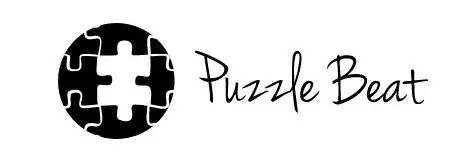
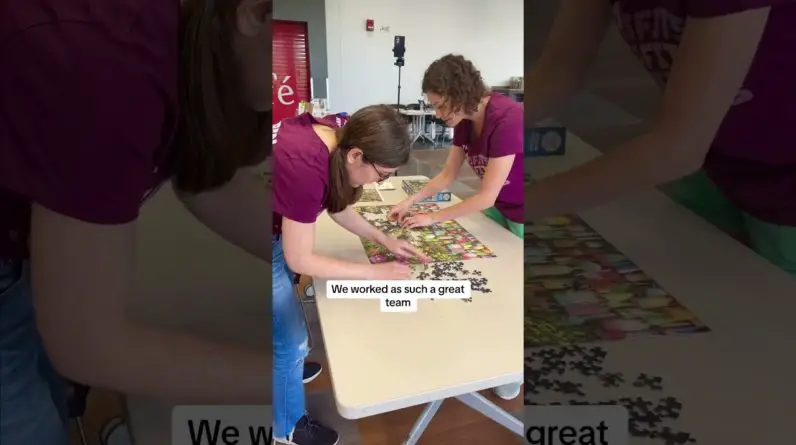
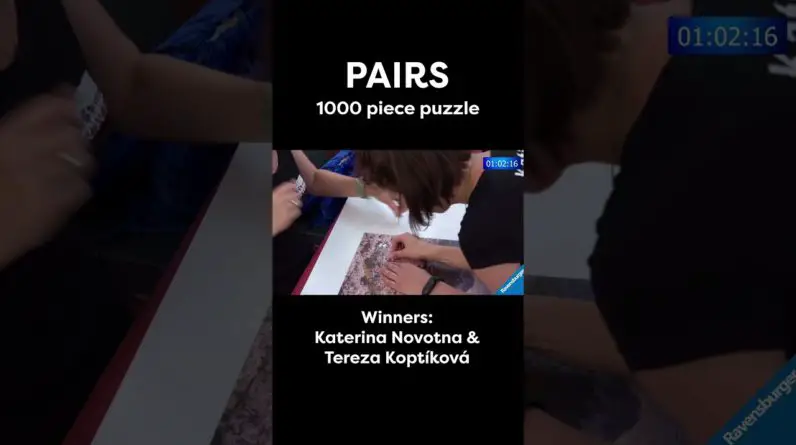
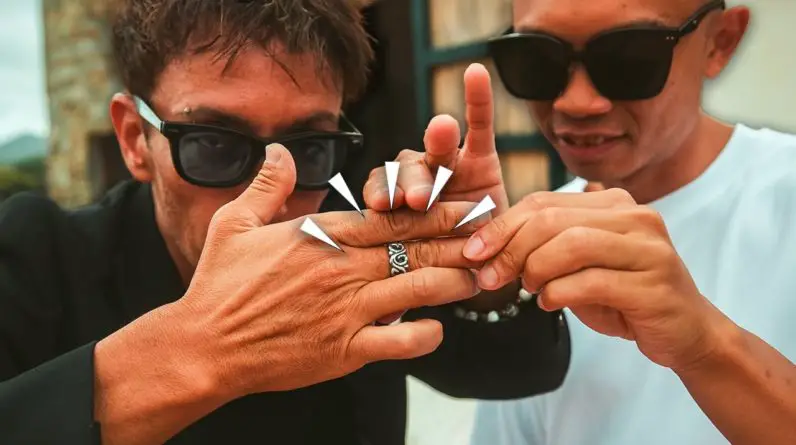
![[1563] A Lock Isn’t Always The Sum of its Parts (Dom Sigma Raked)](https://puzzlebeat.com/wp-content/uploads/2023/09/1563-a-lock-isnt-always-the-sum-of-its-parts-dom-sigma-raked-GhzjPfauSTs-796x445.jpg)
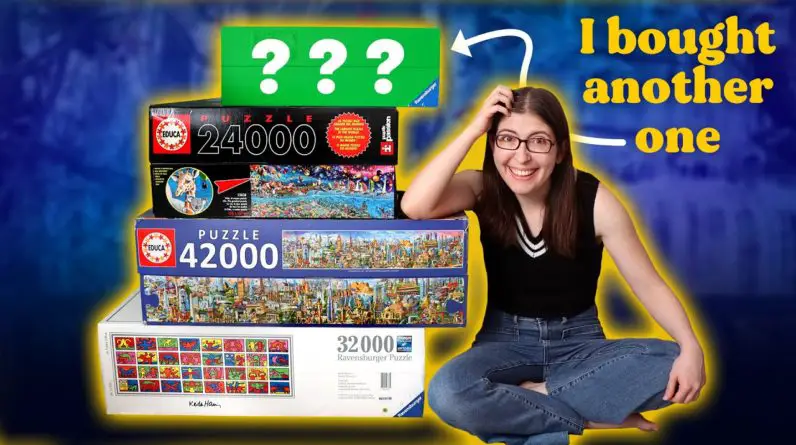
![[1562] Kasp Model 15050 Marine Padlock Picked](https://puzzlebeat.com/wp-content/uploads/2023/09/1562-kasp-model-15050-marine-padlock-picked-Vz5q4zCKEE0-796x445.jpg)